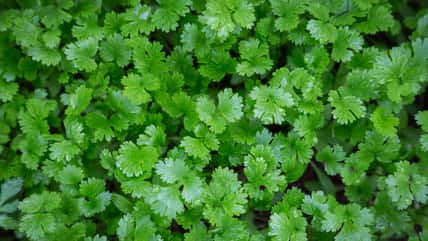Here’s How To Grow The Juiciest And Sweetest Cantaloupes That Will Put Store-Bought Melons To Shame

Gardening isn’t just a hobby; it’s an adventure– especially when you decide to grow cantaloupes.
These sun-loving, sweet fruits can be a bit tricky, but the reward? A juicy, fresh cantaloupe that’s leagues beyond what you find at the grocery store.
Here’s how you can get started and turn your garden into a total cantaloupe haven.
Choosing The Right Variety
First things first, picking the right cantaloupe variety is crucial. It’s critical to understand your local climate and look for types that can thrive there.
“Ambrosia” and “Hale’s Best” are popular choices for their sweetness and reliability. But, before you make a final decision, also consider your growing season’s length and choose a variety that will ripen in time.
Location, Location, Location
Cantaloupes love the sun and will need plenty of warmth to flourish. So, be sure to choose a sunny spot in your garden where they can bask in at least six hours of direct sunlight daily.
Also, make sure that the area has well-draining soil to prevent any waterlogging, which can spell disaster for your melons.

Photo 100583734 © Melica – Dreamstime.com – illustrative purposes only
Soil Prep: The Foundation Of Success
Believe it or not, cantaloupes are pretty picky about soil. They prefer well-drained, nutrient-rich, and slightly acidic to neutral soil– with a pH of 6.0 to 7.0.
So, it’s a good idea to work in plenty of compost or aged manure to enrich the soil before planting.
Sowing Your Seeds
If your growing season is short, you should start seeds indoors about 4 weeks before the last frost date.
You can plant them about an inch deep in biodegradable pots. Then, once the threat of frost is gone and the soil is warm, transplant them outdoors, pots and all, to avoid disturbing the roots.
Water Wisely
It’s also crucial to water consistently, especially during the fruit setting and growing stages. Cantaloupes need about one to two inches of water per week.
But, be careful and avoid overhead watering to reduce the risk of foliar diseases. Instead, drip irrigation or a soaker hose is ideal.
Feeding Your Future Fruit
When it comes to fertilizing, you can use a balanced, all-purpose garden fertilizer.
However, once the plants start flowering, switch to a phosphorus and potassium-rich fertilizer to encourage fruiting.
The Art Of Pruning
Once the plants start vining, you can begin to pinch off the tips to encourage lateral growth.
Then, when a few fruits have set, prune the smaller fruits and excess vines to direct energy into growing fewer, larger, and sweeter cantaloupes.
Pest And Disease Control
It’s important to remain vigilant about pests and diseases, too.
You should regularly check for common issues like aphids, cucumber beetles, and powdery mildew.
Then, you can use organic pesticides and fungicides when necessary and practice crop rotation each year to reduce disease risks.
Playing The Patience Game
Don’t let the wait discourage you because cantaloupes will tell you when they’re ripe.
Be on the lookout for a golden color underneath and a sweet, musky aroma. The stem should also slip easily from the fruit with a light touch. That’s when you’ll know it’s finally time to harvest and enjoy.
Sign up for Chip Chick’s newsletter and get stories like this delivered to your inbox.
More About:Gardening





